Introduction
Why have watches held such significance throughout human history?
It’s a question that goes beyond mere mechanics — touching on our very relationship with time itself. Life is fleeting, and in a world where everything changes, one thing remains constant: our need to measure and manage time.
From the earliest civilizations to the modern digital era, timekeeping has played a critical role in how we live, work, and interact with the world around us. Watches are more than just instruments — they are symbols of precision, personal style, and technological progress. They help us structure our days, honor our commitments, and stay connected to the rhythm of life.
In this article, we'll take a journey through the fascinating history of watches — from ancient timekeeping devices to the handcrafted mechanical masterpieces and cutting-edge smartwatches of today. Discover how each era contributed to the evolution of wristwatches, and why these small devices continue to captivate watch collectors and enthusiasts across the globe.
1. Early Timekeeping Devices
The evolution of watches begins with the story of how humans first attempted to measure the passage of time. Long before the invention of mechanical watches, ancient civilizations developed ingenious methods to track the hours of the day and night. These primitive timekeeping devices laid the foundation for modern horology.
Sundials (circa 1500 BCE)

One of the earliest known timekeeping instruments, the sundial, dates back to around 1500 BCE. Used by ancient Egyptians and Greeks, sundials measured time by casting a shadow from a central gnomon onto a marked surface. They were solar-powered and highly symbolic, linking time with the natural world — though they only worked in daylight.
Water Clocks (Clepsydras) (circa 400 BCE)
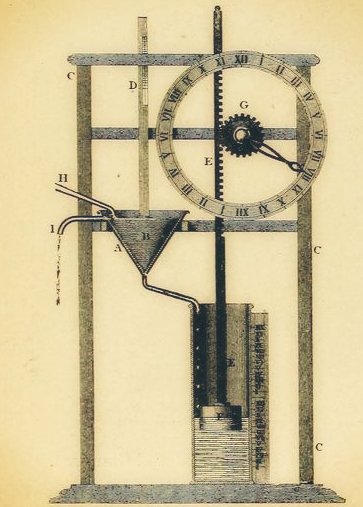
As civilizations sought timekeeping solutions that worked at night, water clocks — or clepsydras — emerged around 400 BCE. Popular in ancient Egypt and Greece, these devices measured time through the controlled flow of water between containers. Though influenced by temperature and water viscosity, clepsydras were a crucial step toward continuous time measurement.
Astrolabes (circa 100 CE)
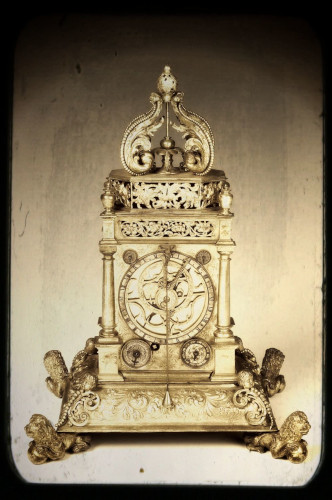
Although introduced earlier (circa 100 CE), astrolabes flourished during the Islamic Golden Age (8th–14th centuries). Originally used for tracking celestial bodies, they also served as early portable timekeeping devices. Astrolabes highlight the deep connection between astronomy, science, and the early development of clocks.
Candle Clocks (circa 500 CE)

First recorded in China and later seen in medieval Europe, candle clocks used marked candles to estimate time as they burned down. Introduced around 500 CE, they were simple yet practical — especially indoors — and often used in monasteries to regulate prayers or routines.
Incense Clocks (circa 600 CE)

Around 600 CE, China introduced the incense clock — a beautifully aromatic timekeeping method. By burning intricately designed incense sticks or spirals with embedded time markers, people could track hours while also enjoying a soothing environment. This blend of ritual, scent, and science reflects the spiritual approach to time in ancient Eastern cultures.
Shadow Clocks (circa 700 CE)
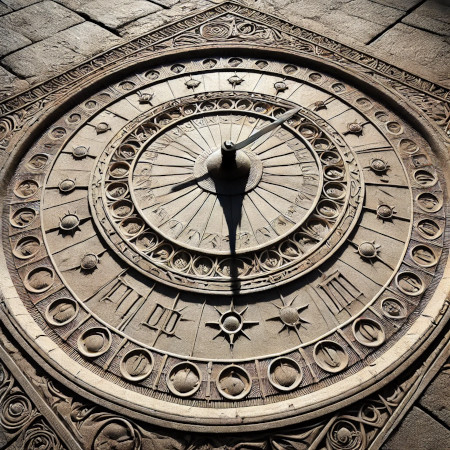
Developed as a more refined alternative to sundials, shadow clocks appeared around 700 CE. By measuring the angle of a shadow on a linear scale, they allowed for more accurate readings throughout the year. These instruments show the increasing complexity of ancient timekeeping systems and their reliance on astronomy.
Friction Clocks (circa 1200 CE)
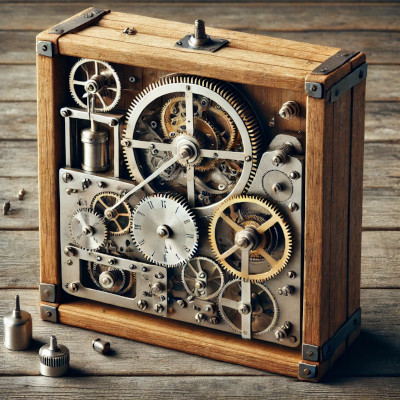
By the 13th century, Europe saw the rise of friction-based mechanical clocks. These groundbreaking devices used gears, weights, and rudimentary escapements to regulate time more accurately than ever before. Often housed in churches or town halls, friction clocks marked the beginning of mechanical horology — a major milestone on the road to pocket watches and wristwatches.
2. The Birth of Mechanical Watches
The invention of mechanical timekeeping in the 14th century marked a turning point in horological history. No longer reliant on sunlight, flowing water, or burning fuel, mechanical clocks harnessed gears, weights, and escapements to deliver unprecedented accuracy and reliability. These early devices, often housed in church towers and public squares, laid the groundwork for personal timekeeping as we know it today.
Key Developments During the Renaissance
The Renaissance era — particularly the 15th and 16th centuries — ushered in a wave of innovation in both science and craftsmanship, and watchmaking was no exception.
One of the most significant advancements was the invention of the mainspring, a compact power source that made portable timepieces possible. This led directly to the emergence of the first pocket watches, a breakthrough that liberated timekeeping from large, stationary mechanisms.
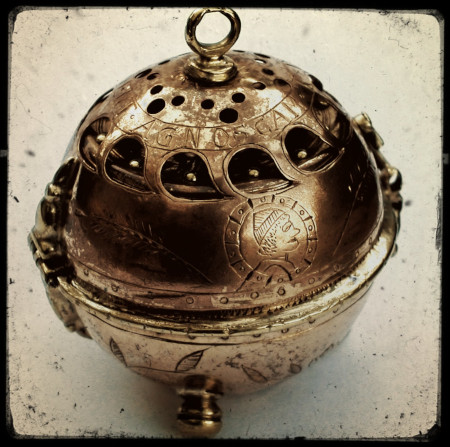
Around the late 15th century, Peter Henlein, a skilled clockmaker from Nuremberg, is credited with creating some of the earliest spring-driven watches, famously called “Nuremberg eggs.” These small, ornamental timepieces could be worn or carried — a true revolution in personal timekeeping.
Beyond the technical leap, the Renaissance was also a golden age of horological artistry. Watchmakers began integrating intricate engravings, precious metals, and ornate decorations, transforming watches into luxurious status symbols as well as functional tools. These early watches often featured only a single hour hand and were not very precise, but their craftsmanship made them prized possessions.
A major leap in accuracy came in the 17th century with the invention of the balance spring (or hairspring) by Dutch scientist Christiaan Huygens. This tiny but powerful innovation significantly improved timekeeping precision by regulating the oscillations of the balance wheel — bringing mechanical watches much closer to the accurate performance we expect today.
The Renaissance era truly set the stage for the evolution of modern horology, blending technical ingenuity with artisanal beauty.
3. The Advent of Pocket Watches
The 16th to 18th centuries marked a transformative era in horology — the golden age of the pocket watch. These portable timepieces became essential accessories for the elite and laid the groundwork for modern wristwatches. No longer bound to large stationary clocks, individuals could now carry personal timekeeping devices, reinforcing the growing importance of punctuality in daily life.
The Rise of Portable Timepieces (16th–18th Centuries)
Following the invention of the mainspring, watchmakers began creating smaller, spring-powered watches that transitioned from being worn on chains around the neck to fitting snugly in a pocket. This shift, which began in the mid-16th century, marked the beginning of true portable horology.
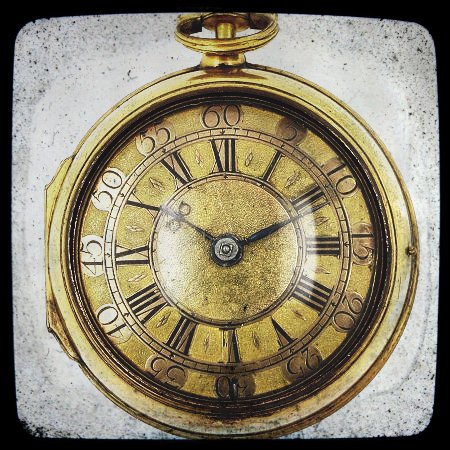
Early pocket watches were often prized more for their decorative appeal than their accuracy. Crafted with ornate engravings, precious metals, and detailed artistry, these timepieces were symbols of status, wealth, and taste. However, timekeeping precision steadily improved — especially with innovations like the addition of a minute hand in the late 17th century, which made these watches significantly more useful in daily life.
Notable Watchmakers and Innovations
By the 18th century, the art of watchmaking had matured into a respected and highly competitive industry. Some of the most influential names in horology emerged during this time, pushing the boundaries of both design and technical sophistication.
-
In England, legendary watchmakers like Thomas Tompion and George Graham transformed the field. Tompion, often hailed as the "father of English clockmaking", was known for his exceptional craftsmanship and for advancing the mechanical reliability of pocket watches. Graham later introduced improvements such as the deadbeat escapement and cylinder escapement, which further refined accuracy.
-
Meanwhile, in Switzerland, the watchmaking hub of Geneva began to rise in prominence. One of the era's most influential figures, Abraham-Louis Breguet, revolutionized the industry. Breguet introduced game-changing innovations including:
- The self-winding mechanism (perpétuelle)
- The tourbillon, which improved accuracy by counteracting gravitational errors
- The pare-chute system, an early shock protection mechanism
These developments not only enhanced functionality but elevated pocket watches into highly engineered luxury instruments.
The 18th century also saw the rise of prestigious watchmaking houses, including Vacheron Constantin and Jaquet Droz, which combined technical excellence with aesthetic sophistication. Their creations often featured automata, musical elements, and miniature paintings — a celebration of horological artistry.
By the end of the 18th century, the pocket watch had evolved from a novelty item into a refined expression of precision, innovation, and identity. It became both a practical tool for telling time and a statement of personal style and social standing.
4. The Transition to Wristwatches
The 19th and early 20th centuries witnessed one of the most significant transformations in horological history: the transition from pocket watches to wristwatches. What began as a fashionable accessory for women evolved into an essential tool for men, driven by practical necessity, military demands, and shifting cultural norms.
Shift from Pocket to Wristwatches (19th–Early 20th Century)
In the 1800s, pocket watches remained the gold standard of personal timekeeping for men, while wristwatches were viewed largely as decorative jewelry for women. These early ladies' wristwatches featured ornate bracelets and delicate dials — more fashion than function.
However, this perception began to shift in the early 20th century, as the advantages of wristwatches became impossible to ignore. The change was initially gradual but accelerated rapidly with the outbreak of war.
The Role of Military Needs
The First World War played a crucial role in reshaping public opinion. Soldiers on the battlefield found wristwatches to be far more practical than pocket watches — they could check the time instantly without fumbling in a pocket or taking a hand off their weapon.
The British military began issuing “trench watches”, rugged timepieces with:
- Luminous dials for nighttime visibility
- Protective shrapnel guards or grills
- Shatterproof crystals and robust cases
These utilitarian features proved invaluable under combat conditions and laid the foundation for the modern field watch. By the end of the war, wristwatches were no longer seen as a novelty — they were a symbol of precision, reliability, and masculinity.
Fashion Trends and the Evolution of Design
Post-war, civilian adoption surged. The wristwatch quickly transformed into a fashionable and functional everyday accessory.
In 1904, Cartier introduced the Santos, designed specifically for aviator Alberto Santos-Dumont, who needed a hands-free timepiece for flight. The Cartier Santos became one of the first purpose-built men’s wristwatches, blending practicality with luxury — and forever changed the perception of wristwatches as merely women’s accessories.
Throughout the 1920s and 1930s, top watchmakers including Patek Philippe, Rolex, and Omega began creating refined wristwatches for a growing market. These timepieces began to incorporate innovations such as:
- Automatic winding mechanisms
- Water-resistant cases
- Chronograph functions for sports and aviation
The wristwatch was no longer just a timekeeping device — it became a status symbol, a fashion statement, and a testament to technological progress.
The shift from pocket to wristwatches wasn’t just a change in form — it represented a cultural evolution. Time had become more personal, accessible, and mobile. By the early 20th century, the wristwatch had become an indispensable companion, one that reflected both the wearer’s lifestyle and the ever-ticking march of modernity.
5. The Quartz Revolution

The 1970s ushered in one of the most transformative eras in horology — the Quartz Revolution. This groundbreaking innovation introduced quartz watches, fundamentally changing the way time was measured and disrupting the traditional watch industry forever. Also known as the Quartz Crisis, this period challenged centuries-old mechanical watchmaking and reshaped the global market landscape.
The Birth of Quartz Watches in the Late 1960s and 1970s
Quartz watches harnessed the power of a small quartz crystal oscillator, which vibrates at a highly precise frequency when electrified. This technology enabled unparalleled accuracy at a fraction of the cost and complexity of mechanical movements.
The Seiko Astron, launched in 1969, holds the distinction as the world’s first commercially successful quartz wristwatch. Unlike mechanical watches with their intricate gears and springs, quartz watches had fewer moving parts, making them:
- More durable
- Easier to manufacture
- Less expensive to produce
Powered by batteries, quartz watches required minimal maintenance and eliminated the need for winding, setting a new standard for convenience and reliability.
The Impact on the Swiss Watch Industry and Global Market
The arrival of quartz technology sent shockwaves through the traditional watchmaking stronghold of Switzerland. For decades, Swiss mechanical watchmakers had dominated the industry with their craftsmanship and precision. However, quartz watches quickly gained favor due to their:
- Superior accuracy
- Affordable pricing
- Low maintenance
Japanese manufacturers, notably Seiko and Citizen, capitalized on quartz innovation and surged ahead in global market share. Meanwhile, many Swiss brands struggled to adapt, leading to what is now referred to as the Quartz Crisis — a period marked by mergers, bankruptcies, and dramatic industry upheaval.
The Renaissance of Mechanical Watches
Despite the quartz takeover, mechanical watches refused to fade into obscurity. A passionate community of collectors and horology enthusiasts began to celebrate the heritage, artistry, and craftsmanship behind mechanical movements.
Swiss luxury brands like Rolex, Patek Philippe, and Audemars Piguet doubled down on their mechanical expertise, positioning their watches as luxury status symbols rather than just timekeeping instruments.
To respond to the changing market, Switzerland also innovated with the launch of Swatch in 1983 — an affordable, stylish quartz watch brand aimed at younger consumers. Swatch helped revive Swiss watchmaking by blending fashion with accessible quartz technology.
Quartz vs Mechanical: Coexistence in Today’s Watch Market
Today, the legacy of the Quartz Revolution endures, with quartz and mechanical watches serving distinct segments of the global watch market:
- Quartz watches dominate the affordable, everyday wear category with unmatched accuracy and convenience.
- Mechanical watches thrive as luxury collectibles, admired for their intricate engineering and timeless appeal.
The Quartz Revolution didn’t kill mechanical watches — it redefined the industry, creating a dynamic balance between cutting-edge technology and traditional craftsmanship that continues to shape watchmaking today.
6. The Rise of Smartwatches

The 21st century has introduced a revolutionary chapter in wristwatch history — the era of smartwatches. Far beyond traditional timekeeping, smartwatches combine advanced technology with versatile functionality, transforming wristwatches into powerful wearable computers.
The Emergence of Smartwatches in the 2000s and 2010s
Although early digital watches of the 1980s and 1990s hinted at the possibility of wrist-worn computing, it was not until the 2010s that smartwatches became mainstream. The launch of the Apple Watch in 2015 marked a defining moment, rapidly popularizing smartwatches through seamless integration with the Apple ecosystem, stylish design, and robust features.
Following Apple’s success, other major technology companies such as Samsung, Garmin, and Fitbit introduced smartwatches tailored to diverse user needs — from fitness tracking and health monitoring to mobile notifications and communication.
Smartwatches today do much more than display time: they track heart rates, monitor workouts, receive calls and notifications, run apps, and even facilitate contactless payments, becoming essential tools for tech-savvy users, athletes, and professionals.
Integration of Advanced Technology and Multifunctionality
What sets smartwatches apart is their ability to integrate multiple technologies into a compact, wearable device. Utilizing wireless connectivity such as Bluetooth, Wi-Fi, and cellular networks, smartwatches offer features including:
- GPS tracking
- Mobile payments
- Music streaming and control
- Health metrics monitoring (steps, sleep, blood oxygen, ECG)
Beyond health and fitness, smartwatches serve as hubs for communication and entertainment. Users can view text messages, emails, and social media alerts directly on their wrists, reducing dependence on smartphones. Voice assistants like Siri, Google Assistant, and Alexa enhance multitasking capabilities.
Aesthetic customization also plays a key role in smartwatch appeal. Many brands offer interchangeable bands and digital watch faces, enabling users to personalize their device’s look and functionality to suit individual tastes.
The Future of Smartwatches
As wearable technology advances, smartwatches are expected to incorporate even more sophisticated features such as AI-powered health insights, improved biometric sensors, and deeper integration with smart home and IoT devices.
The rise of smartwatches represents the convergence of fashion, technology, and function, making them one of the most transformative developments in the history of wristwatches.
Conclusion
The history of watches is a captivating journey that spans thousands of years, reflecting humanity’s enduring quest to measure and master time. From the earliest sundials of ancient civilizations to the intricate mechanical masterpieces of the Renaissance, and from the revolutionary quartz watches of the 20th century to the cutting-edge smartwatches of today, the evolution of timekeeping has been driven by relentless innovation and exceptional craftsmanship.
Over the centuries, watchmaking has struck a delicate balance between functionality and artistry, producing timepieces that serve not only as practical tools but also as enduring symbols of style, status, and technical achievement. While the Quartz Revolution disrupted traditional watchmaking, it also sparked a renewed appreciation for mechanical watches as luxury items and collector’s treasures. At the same time, smartwatches have introduced an entirely new dimension to wristwear, blending advanced technology and multifunctionality into sleek, wearable devices.
Looking forward, watchmaking continues to evolve at the intersection of tradition and technology. Mechanical watches will remain cherished for their heritage, craftsmanship, and the artistry embedded in every movement, while smartwatches will keep pushing the boundaries of innovation, offering increasingly sophisticated features tailored for the modern, tech-savvy user.
Ultimately, whether driven by precision engineering or cutting-edge technology, watches transcend mere instruments for telling time—they embody human ingenuity, cultural values, and our unyielding pursuit of progress.
The history of watches is a fascinating journey that spans centuries, evolving from primitive sundials and water clocks to the sophisticated timepieces we admire today. Understanding this evolution provides valuable context for modern watch enthusiasts and collectors alike. To dive deeper into how the internal workings of these timekeepers have changed over time, check out our comprehensive Watch Mechanism Types: A Comprehensive Guide.
Watches have not only served as practical tools but have also played a significant role in culture and cinema, often symbolizing status, style, and innovation on the big screen. Explore the impact of famous movie watches and how they have influenced popular culture in our article on Watches in Culture and Cinema: Famous Movie Watches and Their Impact.
Among the many iconic watches that have marked milestones in history, the Omega Speedmaster stands out as the first watch worn on the moon. Its legacy is a testament to human ingenuity and the critical role watches have played in exploration. Learn more about this legendary timepiece in The Omega Speedmaster: The First Watch Worn on the Moon.
